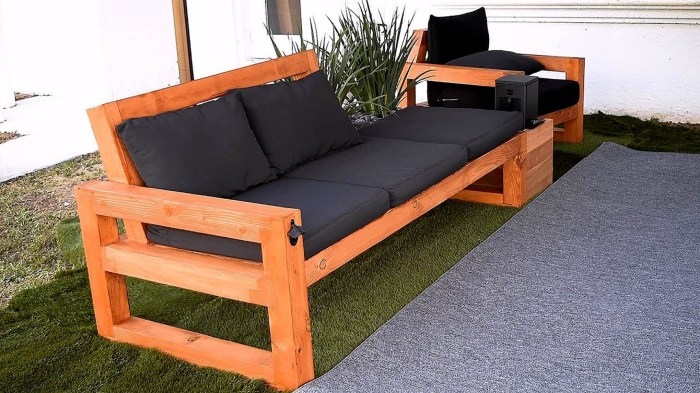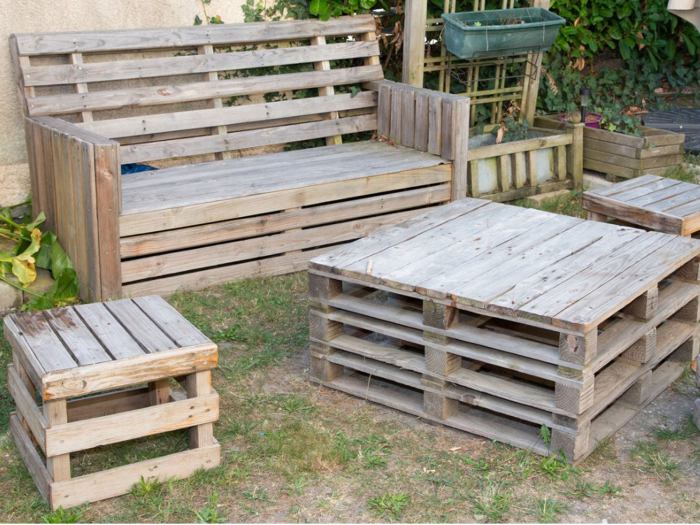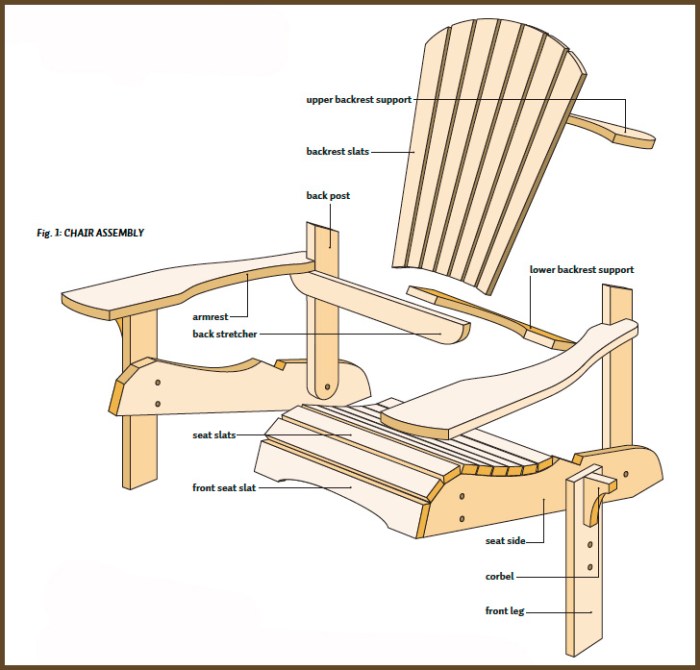Wooden furniture plans offer a gateway to crafting unique and lasting pieces for your home. Whether you’re a seasoned woodworker or a curious beginner, these blueprints provide a roadmap to creating stunning furniture, from classic tables and chairs to intricate shelves and beds. The appeal of wooden furniture lies in its timeless beauty, durability, and ability to add warmth and character to any space.
This guide delves into the world of wooden furniture plans, exploring their diverse types, benefits, and how to navigate the process from choosing the right plan to bringing your project to life. We’ll cover essential tools and materials, provide step-by-step instructions, and address common challenges, equipping you with the knowledge and confidence to embark on your woodworking journey.
Finding and Choosing Wooden Furniture Plans

Finding the right wooden furniture plans can be the first step towards building your dream piece. There are many resources available, both online and offline, that offer a wide variety of plans to suit different skill levels and styles.
Reputable Sources for Finding Wooden Furniture Plans
You can find furniture plans from various sources, each offering different advantages and disadvantages.
- Online Resources: Websites dedicated to woodworking offer a vast selection of plans. Some popular options include:
- Ana White: Known for its free and easy-to-follow plans, Ana White offers a wide range of furniture projects for beginners and experienced woodworkers alike.
- Woodworking for Mere Mortals: This website provides detailed plans and video tutorials, making it easier to understand the construction process.
- Popular Mechanics: This magazine offers a range of plans, from simple projects to more complex builds.
- Woodworking Magazines: Magazines like “Woodworking Magazine” and “Fine Woodworking” often feature detailed plans and articles on various furniture projects.
- Woodworking Books: Books dedicated to specific furniture styles or woodworking techniques can provide detailed plans and instructions.
- Local Woodworking Stores: Many woodworking stores offer plans or can point you towards reputable sources.
Choosing the Right Plan
Selecting the right plan is crucial for a successful project.
- Skill Level: Consider your woodworking experience and choose plans that match your abilities. Beginners should start with simpler projects, while experienced woodworkers can tackle more complex designs.
- Desired Style: Choose a plan that aligns with your personal style and preferences. Do you prefer modern, traditional, or rustic furniture?
- Available Tools: Ensure you have the necessary tools to complete the project. Some plans require specialized tools, while others can be built with basic equipment.
Evaluating Plan Quality and Clarity
Before committing to a plan, assess its quality and clarity to ensure a smooth building process.
- Detailed Instructions: The plan should include clear and concise instructions, with step-by-step guidance and diagrams.
- Cut Lists and Materials List: A comprehensive cut list and materials list will help you gather the necessary materials and ensure accurate cutting.
- Clear Diagrams: Detailed diagrams and illustrations are essential for visualizing the construction process and understanding the assembly steps.
- Measurements and Dimensions: Accurate measurements and dimensions are crucial for building a well-proportioned and functional piece of furniture.
- Customer Reviews: Reading reviews from other woodworkers can provide valuable insights into the plan’s quality and ease of construction.
Essential Tools and Materials for Wooden Furniture Projects

Building wooden furniture requires a variety of tools and materials, and having the right ones can make the process much smoother and more enjoyable. Here, we’ll explore the essential tools and materials you’ll need to tackle common wooden furniture projects.
Woodworking Tools
The foundation of any woodworking project lies in the tools you use. Here’s a breakdown of essential woodworking tools:
- Hand Saw: A hand saw is a versatile tool for cutting wood to length and making rough cuts. Choose a crosscut saw for cutting across the grain and a ripsaw for cutting along the grain.
- Circular Saw: A circular saw is a power tool used for making precise and straight cuts in wood. It features a circular blade that spins at high speed, making it ideal for ripping large sheets of plywood or cutting intricate shapes.
- Jigsaw: A jigsaw is a power tool used for making curved cuts in wood. It features a reciprocating blade that moves up and down, allowing for precise and intricate cuts.
- Router: A router is a power tool used for shaping, trimming, and carving wood. It features a rotating cutter that can be used to create a variety of profiles and designs.
- Drill: A drill is a power tool used for drilling holes in wood. Choose a cordless drill for portability and a corded drill for more power.
- Sandpaper: Sandpaper is used for smoothing and finishing wood surfaces. Choose different grit sandpaper for different stages of sanding, with finer grits for a smoother finish.
- Clamps: Clamps are essential for holding pieces of wood together while gluing or assembling. Choose a variety of clamps in different sizes to accommodate different project needs.
- Measuring Tape: A measuring tape is crucial for accurate measurements. Choose a tape measure with clear markings and a locking mechanism for easy use.
- Level: A level is used to ensure that surfaces are straight and level. Choose a level with a clear bubble and a sturdy frame.
- Combination Square: A combination square is a versatile tool for measuring angles and lengths. It features a ruler, a protractor, and a scribing blade, making it a valuable tool for precise woodworking.
Hardware
Hardware plays a crucial role in assembling and securing wooden furniture. Here’s a list of essential hardware:
- Screws: Screws are used for attaching pieces of wood together. Choose screws made of wood-friendly materials like stainless steel or brass to prevent rusting.
- Nails: Nails are used for attaching pieces of wood together. Choose nails made of galvanized steel or brass to prevent rusting.
- Wood Glue: Wood glue is used for bonding pieces of wood together. Choose a high-quality wood glue that is water-resistant and dries quickly.
- Hinges: Hinges are used for attaching doors and lids to furniture pieces. Choose hinges made of sturdy materials like brass or steel, and select the appropriate size and type based on the project.
- Drawer Slides: Drawer slides are used for smooth and easy drawer operation. Choose drawer slides made of sturdy materials like steel or nylon, and select the appropriate size and type based on the drawer size and weight.
- Knobs and Handles: Knobs and handles are used for opening drawers and doors. Choose knobs and handles that complement the furniture style and are easy to grip.
Finishing Materials
Finishing materials are essential for protecting and enhancing the appearance of wooden furniture. Here’s a list of essential finishing materials:
- Wood Stain: Wood stain is used to color wood and enhance its natural grain. Choose a wood stain that complements the wood species and the desired finish.
- Wood Sealer: Wood sealer is used to protect wood from moisture and dirt. Choose a wood sealer that is compatible with the chosen wood stain and provides the desired level of protection.
- Wood Finish: Wood finish is used to protect wood from scratches and wear. Choose a wood finish that provides the desired level of protection and sheen.
- Paint: Paint is used to color wood and provide a durable finish. Choose a paint that is suitable for wood and provides the desired color and sheen.
- Varnish: Varnish is a type of wood finish that provides a protective layer and enhances the natural beauty of wood. Choose a varnish that provides the desired level of protection and sheen.
Safety Equipment
Safety should always be a top priority when working with woodworking tools and materials. Here’s a list of essential safety equipment:
- Safety Glasses: Safety glasses protect your eyes from flying debris. Choose safety glasses that are ANSI-certified and provide adequate protection.
- Hearing Protection: Hearing protection is essential when using power tools. Choose hearing protection that provides adequate noise reduction and fits comfortably.
- Dust Mask: A dust mask protects your respiratory system from sawdust and other airborne particles. Choose a dust mask that is rated for woodworking dust and fits snugly.
- Work Gloves: Work gloves protect your hands from cuts, splinters, and other hazards. Choose work gloves that are made of durable materials and provide a good grip.
Step-by-Step Guide to Building Wooden Furniture from Plans

Building wooden furniture from plans is a rewarding experience that allows you to create unique pieces for your home. This step-by-step guide will walk you through the process of building a simple wooden furniture project from a plan, from interpreting the plan to finishing the project.
Understanding the Furniture Plan
A furniture plan is a blueprint that provides detailed instructions and diagrams for building a piece of furniture. It includes measurements, material lists, and assembly instructions. The first step is to thoroughly understand the plan before starting the project. This includes:
- Reading the plan: Carefully read through the plan to understand the overall design, materials needed, and assembly process. Pay attention to any specific instructions or notes.
- Examining the diagrams: Study the diagrams to visualize the piece of furniture and understand the layout of the components. Make sure you understand the different parts and how they fit together.
- Checking the measurements: Double-check all the measurements provided in the plan to ensure accuracy. Any errors in measurements can lead to problems during assembly.
Preparing the Materials
Once you have a clear understanding of the plan, gather all the necessary materials. This includes:
- Wood: The plan will specify the types of wood required, such as pine, oak, or plywood. Ensure you purchase the correct types and quantities.
- Hardware: This includes screws, nails, hinges, drawer slides, and any other necessary hardware. Check the plan for specific types and sizes required.
- Finishing supplies: These include sandpaper, wood filler, stain, paint, and sealant. The plan may provide recommendations for finishing products.
Cutting the Wood
Using the measurements provided in the plan, carefully cut the wood to the required dimensions. It’s important to make accurate cuts to ensure the components fit together properly.
- Measure twice, cut once: Always double-check your measurements before making a cut. It’s better to be safe than sorry.
- Use the right tools: A circular saw, miter saw, or table saw are common tools used for cutting wood. Choose the appropriate tool for the specific cuts required.
- Make clean cuts: Ensure that your cuts are clean and accurate to avoid gaps or misalignment during assembly.
Assembling the Furniture, Wooden furniture plans
Now it’s time to assemble the components of your furniture. This involves joining the cut pieces of wood together using the specified hardware.
- Follow the plan: Refer to the plan for the assembly sequence and instructions. It will guide you through the process step-by-step.
- Use the right tools: A drill, screwdriver, hammer, and clamps are essential tools for assembling furniture.
- Pre-drill holes: Pre-drilling holes before driving screws can help prevent wood from splitting.
- Check for alignment: Regularly check for alignment and squareness during assembly to ensure the piece of furniture is built correctly.
Finishing the Furniture
Once the furniture is assembled, it’s time to finish it to your liking. This involves sanding, filling, staining, painting, and sealing.
- Sanding: Sand the surface of the furniture to smooth out any rough edges or imperfections.
- Filling: Use wood filler to fill any gaps or holes.
- Staining or painting: Apply stain or paint to achieve the desired color and finish.
- Sealing: Apply a sealant to protect the finish and enhance durability.
Last Recap: Wooden Furniture Plans
With a little planning, patience, and the right tools, building wooden furniture from plans can be a rewarding and fulfilling experience. It’s a journey of creativity, problem-solving, and the satisfaction of crafting something beautiful and functional with your own hands. So, grab your tools, select a plan that sparks your interest, and let the journey of woodworking begin.
Detailed FAQs
What are the best sources for finding wooden furniture plans?
You can find excellent plans online through websites like Ana White, Woodworking for Mere Mortals, and popular woodworking forums. Local libraries and bookstores also often carry plan books.
What level of woodworking skill is needed for these plans?
Plans cater to all skill levels. Beginners can start with simpler projects, while experienced woodworkers can tackle more complex designs. Many plans provide detailed instructions and illustrations, making them accessible to all.
How do I choose the right wood for my project?
Consider the project’s intended use, desired aesthetic, and budget. Hardwoods like oak and maple offer durability and beauty, while softwoods like pine and cedar are more affordable. The plan will usually specify recommended wood types.
Wooden furniture plans are a great way to create unique and personalized pieces for your home. If you’re looking for a more comprehensive guide, you can check out woodworking building plans , which offer detailed instructions and diagrams for a variety of projects.
These plans can help you build everything from simple shelves to intricate cabinets, so you can unleash your creativity and craft beautiful furniture that you’ll cherish for years to come.
